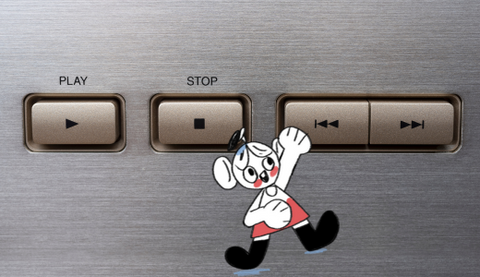Objectives and key results (OKRs), or key performance indicators (KPIs)?
Which option is best for keeping your business on track? Can you use both?
If you’ve been struggling to get your head around this oft-considered conundrum, we’ve got you. Here’s everything you need to know about OKRs vs KPIs.
What are KPIs?
KPIs are Key Performance Indicators; that is, simple metrics about various aspects of your business performance. They do not communicate additional context, such as the intended direction of travel (i.e., your goal). They tell you how you are performing, but they don’t help you improve.
For example, metrics such as website traffic or ad conversion rate could be your chosen KPIs. At the end of each reporting period - say, a month - you can look at the numbers and see how many people have visited your website, or how many sales your adverts have generated. You want to know those figures, because they can be good indicators of how your business is performing.
What are OKRs?
OKR, or ‘Objectives and Key Results’ is a goal-setting framework that can be used by an individual, team or entire organisation. It laser-beams your focus on achieving the desired end result, helping to avoid distractions and disruptions. OKRs help you achieve change.
For example, you might set the following objective, with the key results that will help you achieve it:
- Objective: to deliver more enjoyable and effective workshops.
- Key result: achieve a 20% improvement in post-workshop survey results.
- Key result: test two new workshop tactics for your monthly retrospective workshop by the end of the year.
You can almost think of it as though your Objective is a New Years Resolution (‘to get fit’) and your Key Results are how you’ll get there (‘X sessions at the gym per week’ and ‘X fewer calories a day’). You can find out more about how to design your OKRs on the Workshop Tactics OKRs page.
You might be thinking “Well that’s it then. We’ll use OKRs and leave KPIs to the amateurs!”.
Well, not too fast. Not only are KPIs often important for the Key Results portion of your OKRs, they can be useful in their own right. In the New Year’s Resolution example, you’d need to measure calories per day and gym sessions per week - which are KPIs!
What is the difference between OKRs and KPIs?
The sections above describe each of these things - but what are the differences in how they are used? Well KPIs are used to track progress, as we discussed, but they are also useful for things like benchmarking or status reporting. They can also be used to trigger action (e.g., if web traffic drops by 10%, you troubleshoot the website to make sure there aren’t any technical issues). Your KPIs should be reviewed regularly, but they can just tick along taking measurements month by month without any real end in sight.
OKRs, on the other hand, don’t track progress so much as drive it. The objective is what you’re aiming for, not what has already happened, and the key results are how you know you’re achieving it. OKRs are often set on a quarterly basis, although you can choose a different time period to suit your business. When that period is up, you set another OKR, and they are likely to be different each time.
When to use OKRs or KPIs
The easy answer to “should I use OKRs or KPIs?” is “both” - it’s when you use them that many people struggle with. The above explanations help to make it clear: OKRs are often quarterly, aspirational goals with in-built plans. KPIs are ongoing (and can also be used as Key Results).
One limitation to - well, just about any approach to measuring performance - is your ability to accurately measure against what you want to achieve. It can be very hard to find a metric that is both easy to measure reliably, but also accurately reflects progress.
If we go back to the idea that a drastic change in one of your KPI measurements can trigger action… that action could be the generation of a new OKR. For example, if your website traffic declines by 10% (with no technical reason), you might choose to set an Objective to get back to growth over the next quarter. In that case, your Key Results might include a specific increase in website traffic (using your old KPI), as well as other metrics such as volume of content produced, ad spend or whatever approach you choose to drive that growth.
How to manage your KPIs
As KPIs are usually simple metrics, it can be easy to get carried away and measure too many - or the wrong - things. You’ll want to keep an eye out for ‘vanity metrics’ that might look good, but don’t actually tell you anything meaningful. For example, if you run an online shop, you might see spikes in followers on social media… but that won’t necessarily translate into sales. Sure, you can keep an eye on that trend line, but it doesn’t need to find its way into your reporting or performance metrics.
You also need to ensure that your measurements are accurate, and that the data is granular enough to be meaningful. So for example, using that web traffic metric again - increasing traffic is great, but if the conversion rate drops as the numbers go up (say, because you’re using poorly targeted ads), you’re missing out on half the story - your conversion rate might be more useful.
How to manage your OKRs
OKRs are more complex to manage as they are tied into your mission and are used to inform the action you’ll take over a time period (a quarter, for example). This means they need buy-in from the team responsible; therefore, that team should be involved in creating them.
An OKR workshop is a great starting point for doing this. The Workshop Tactics OKRs approach not only walks you through this process, but includes a Miro template to use if you’re running the session online. It also includes tips about setting health metrics and how to prioritise your efforts over one, four and twelve weeks.
Some of the top tips for managing OKRs include:
- Make sure your Key Results are actual results and not just tasks.
- Make sure the Objective is aspirational - it’s a stretch goal that’s really worth working for; not something you might achieve without trying.
- Ensure that the Objective is important to the team working on it - so much so that you can reliably measure that team's performance by looking at its progress against that goal alone.
- Don’t set an Objective that is a metric. It’s supposed to be directional, not just a number.
Not sure if you’re ready to set an OKR yet? Try a different goal-setting tactic! If you’re struggling to decide on the right OKR, run a workshop to help you decide on the right course of action.









